I am working on the display panel and here is a little cardboard led driver strip using a pnp 2n3906 transistor.
The display panel will have a lot of these.
From right to left - input , +5 , nc , gnd
Base resistor 22k and emitter resistor 1k in this tryout.
Current draw with led on/transistor off = 2ma and with led off and transistor on = 2.5ma more or less so current is always flowing. Could be a better circuit but it's simple and it gets the job done.
January 5, 2017 - This better shows how I improved the look of the led by sanding out the concave top surface. The led on the right is with the concave feature and on the left after sanding.
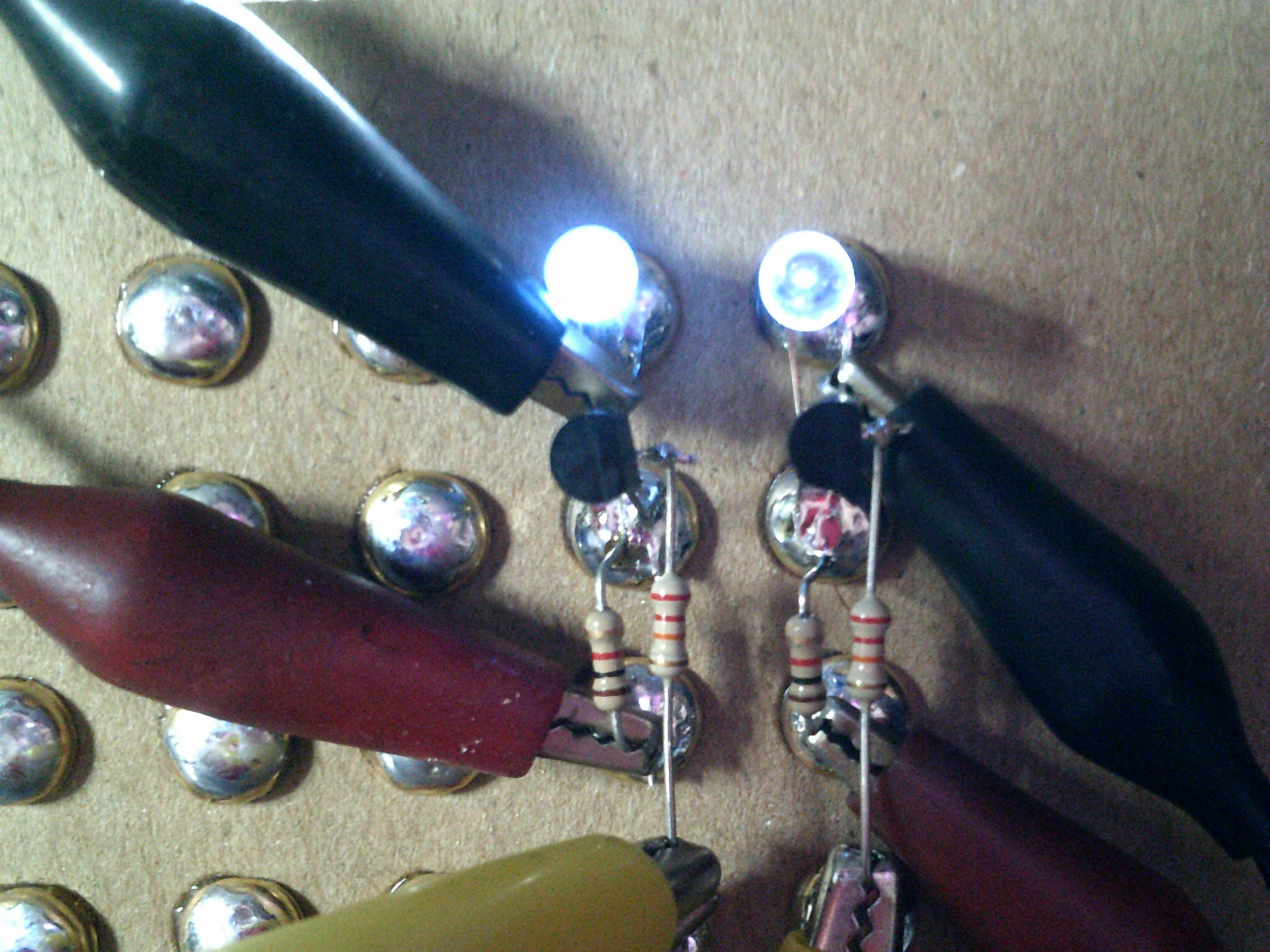
January 5, 2017 - Starting to layout the display panel. I am leaving a little open space for any additions.
Cardboard base is cut to size and taped up to show what I have in mind.
Holly brightness Batman - If all 43 leds light up at one time then I just might go blind :-) Of course that should not happen, but then again...
Well, the top register row of leds are in place. If this computer fails then I can at least use this panel as a bathroom light. https://hackaday.io/hacker/140533-ted-yapo Thanks for posting Wrencher :-)
01/09/17 - So far so good. All leds light up and when the inputs go to ground the transistors shunt as needed.
 Dr. Cockroach
Dr. Cockroach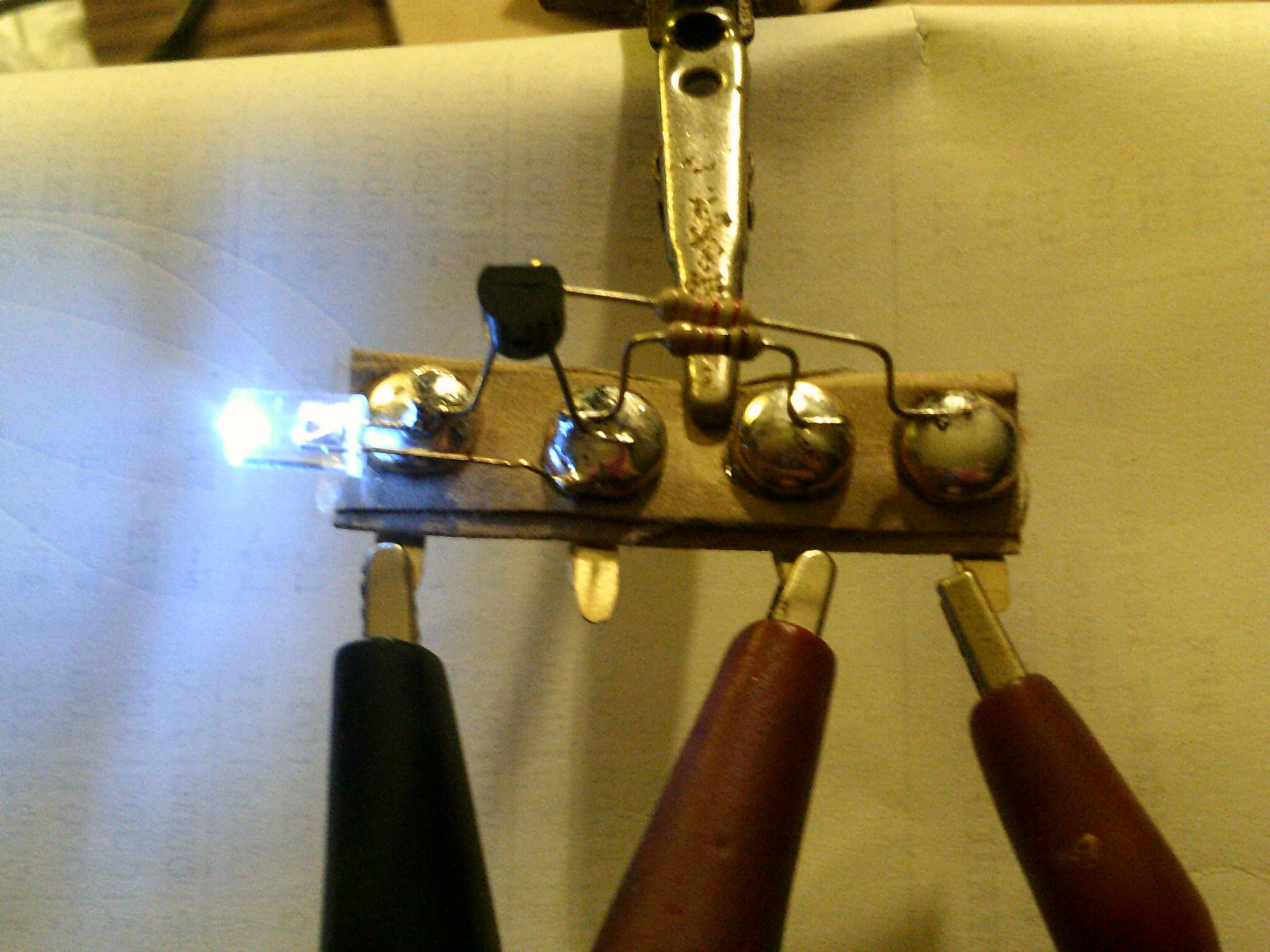
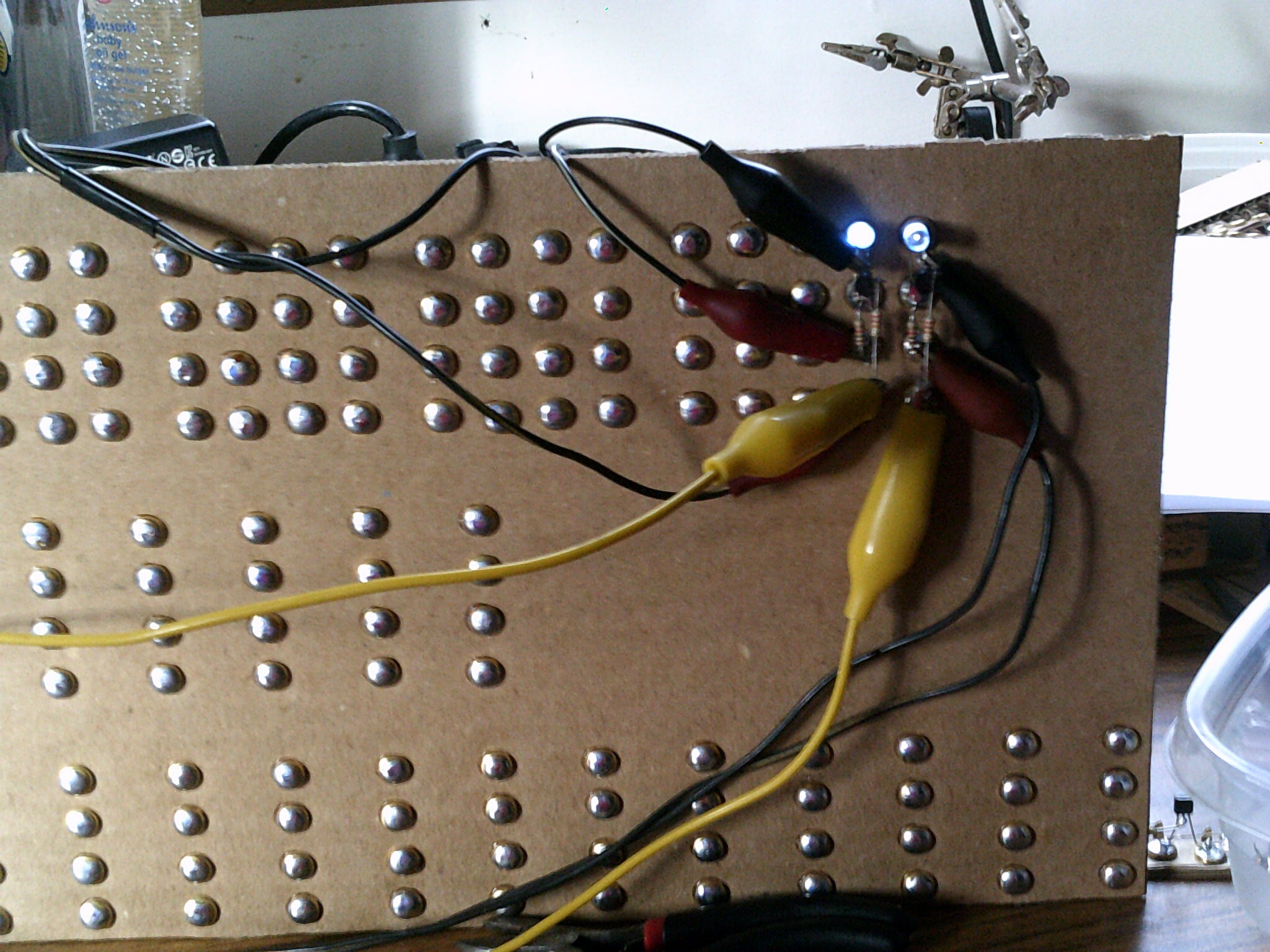
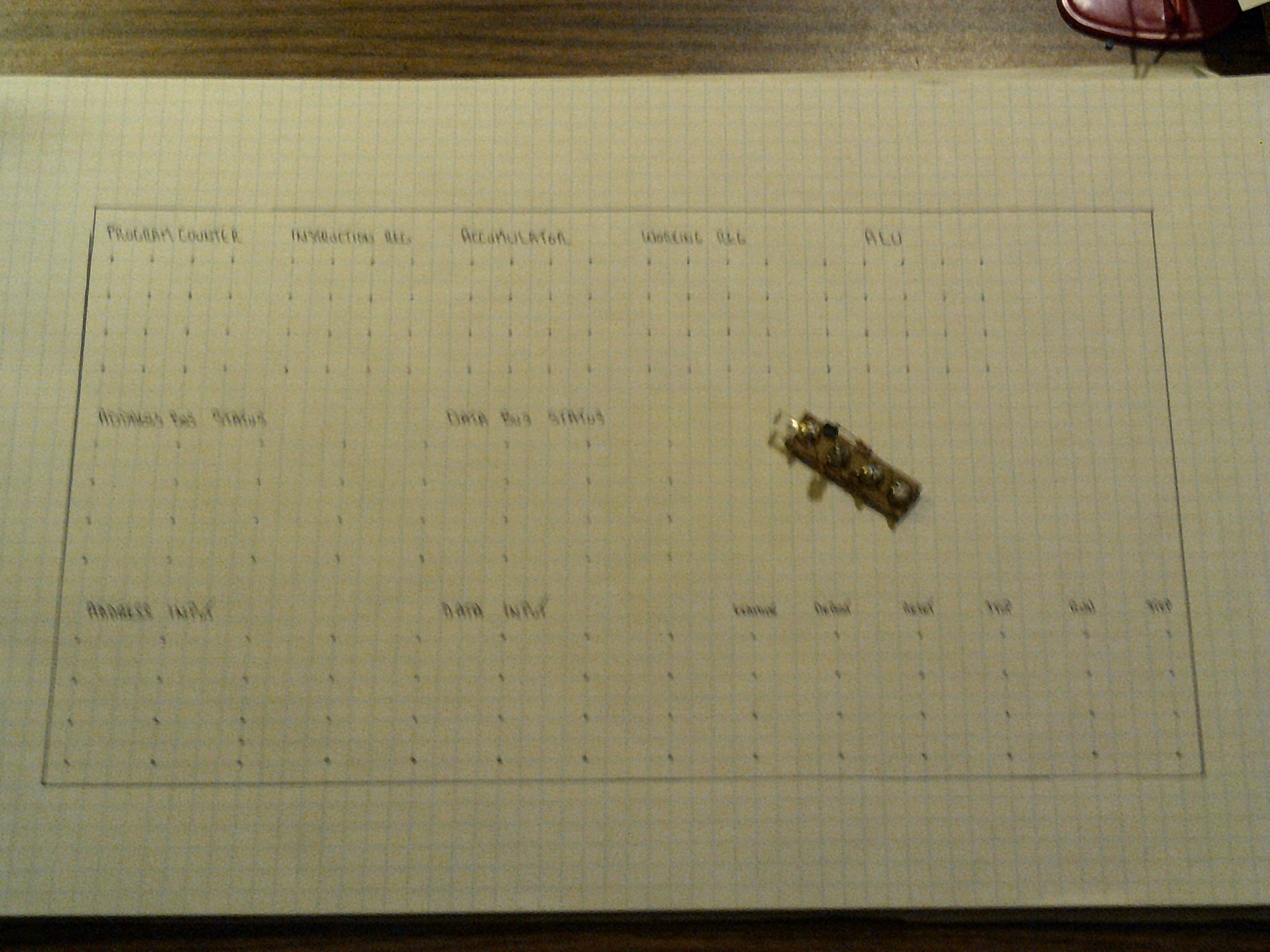
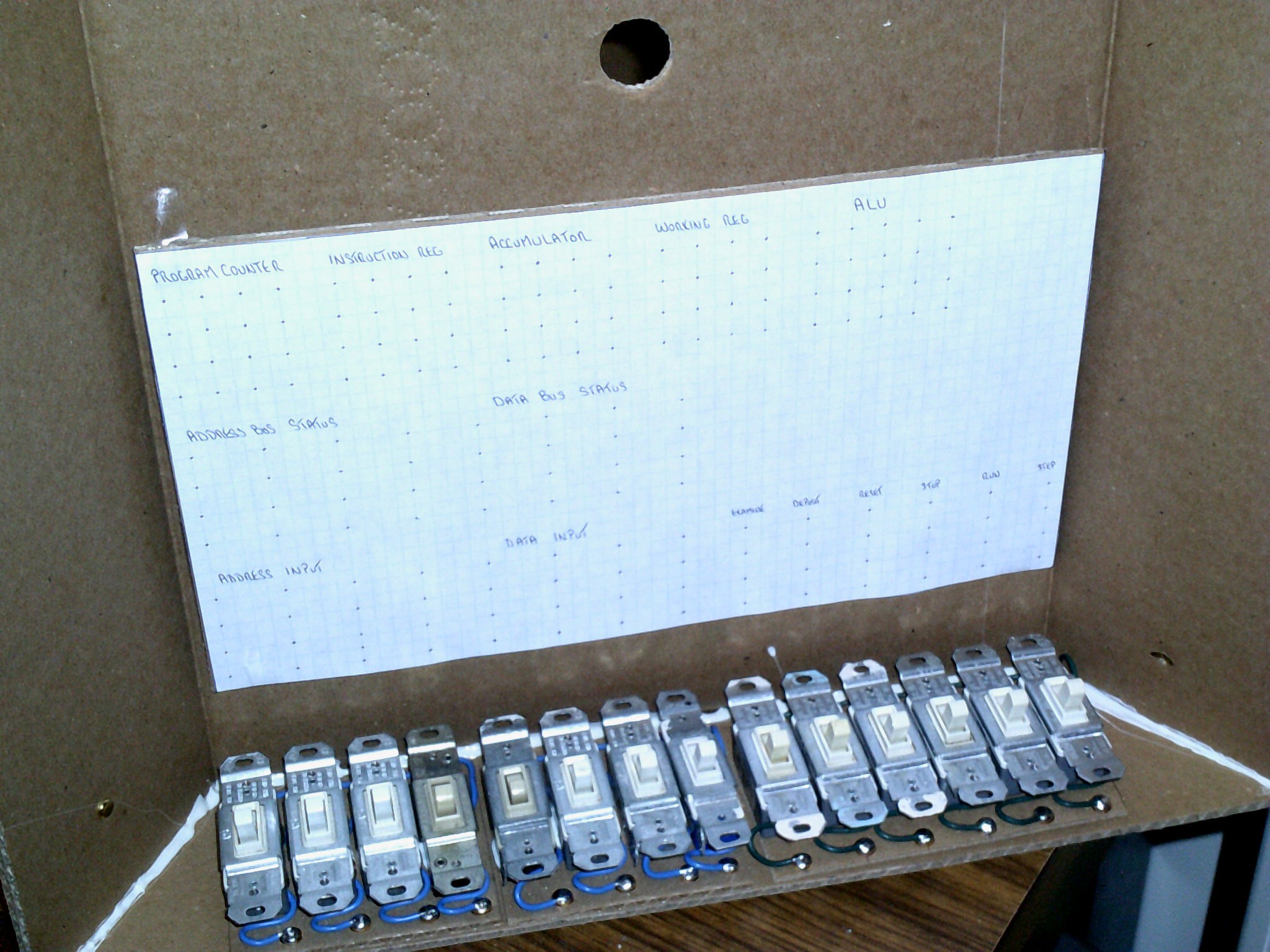
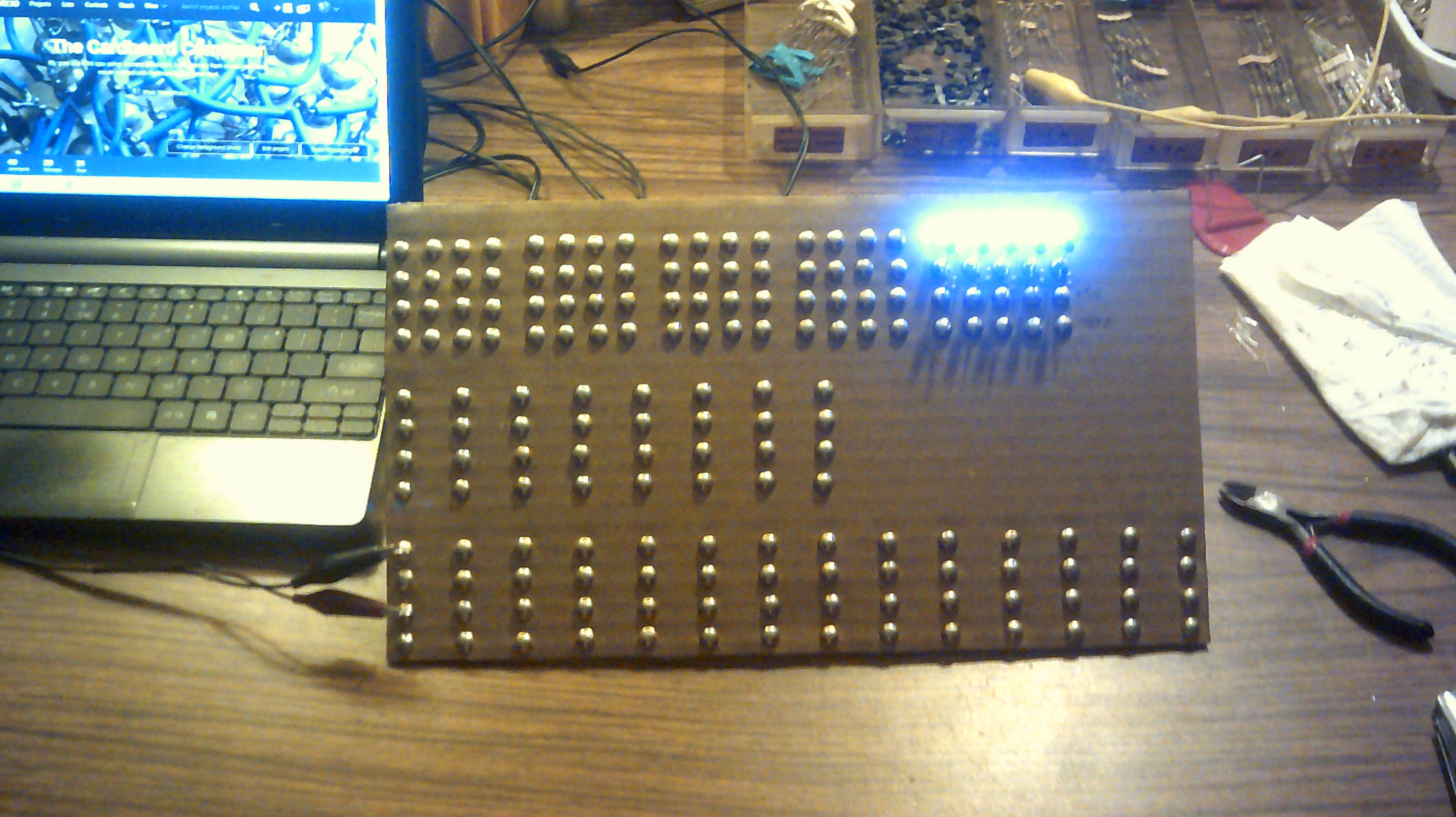
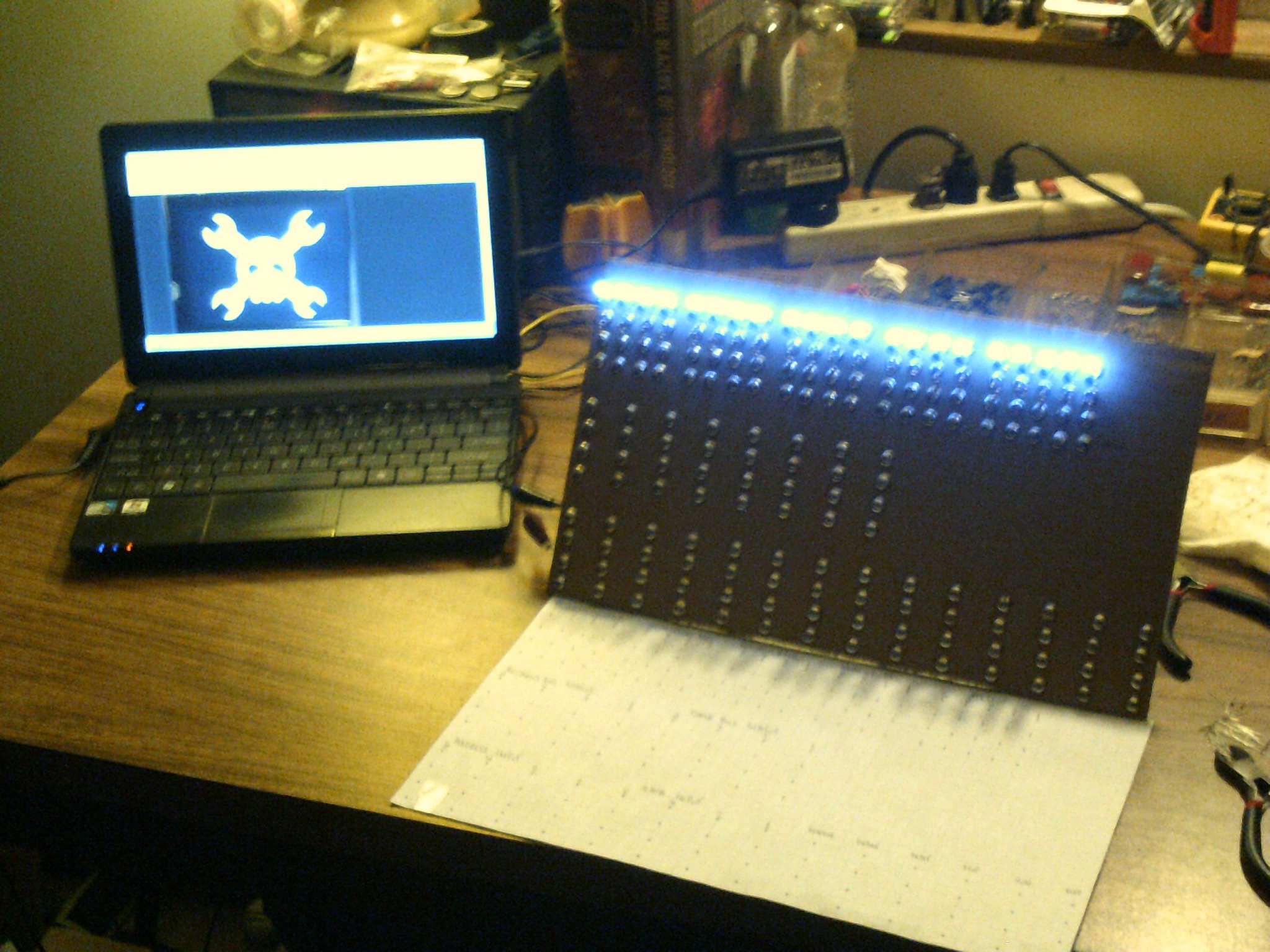
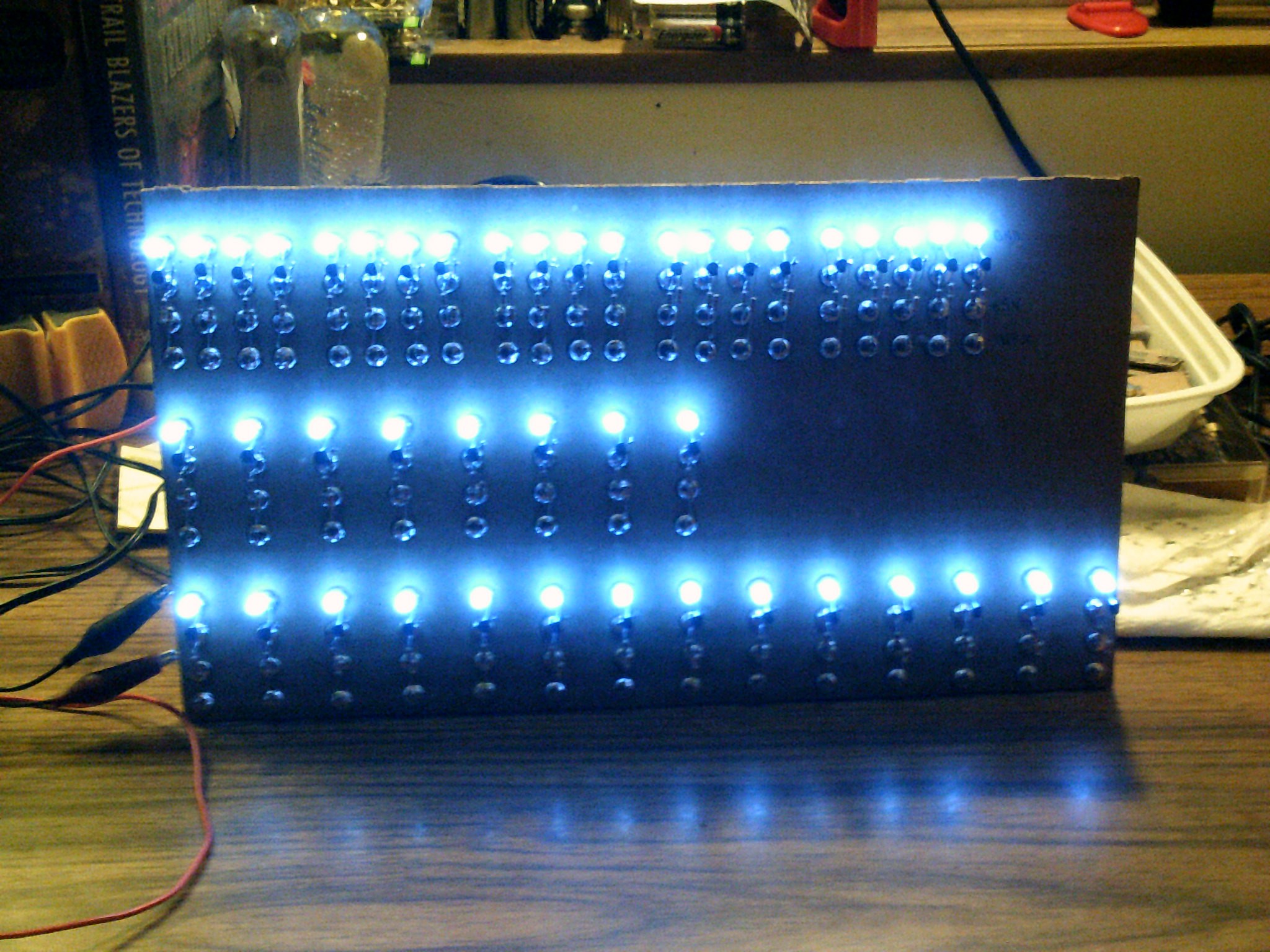
Discussions
Become a Hackaday.io Member
Create an account to leave a comment. Already have an account? Log In.
One thing I noticed with these leds is that the top has a concave depression that gives the led a very bright light point with a circle of light around the edge. My eyes did not like this effect. I ground down the top surface with sandpaper past the curved area and now the led gives a pleasant softer more even light from the top view. The former might have been good looking for holiday lighting but not for this build :-)
Are you sure? yes | no
Interesting. The transistor shunts current around the LED to turn it off? I guess the advantage to this design is reduced power spikes when the LED changes state - which could help prevent power supply noise issues. Another plus is that it would work at lower supply voltages than a more traditional solution with the transistor E/C in series with the LED. The downside is more average current consumption, but 2.5 mA each is not a lot of power :-)
Is this it?
if so, you may not even need a base resistor - Q1 is an emitter follower.
Are you sure? yes | no
Thanks Ted, yup that's it. I was not thinking of spike reduction and such. I just needed something that would work with pnp's and give me a 1 in and 1 out :-) And a Happy New Year to you.
Are you sure? yes | no
With some more NPN, you can use a more classical "switch" circuit ;-)
Patience.
Are you sure? yes | no
I'm 60 y/o, I have lots and lots of patience :-) Years left in me, that's another matter......
Are you sure? yes | no
ah hah, there's that blasted circuit that was driving me nuts for days...
dagnabbit, nope!
https://hackaday.io/project/18868-improbable-secret-project/log/50780-open-collector-fail-the-atx-power-switch-saga-continues
Are you sure? yes | no
another enlightening read !
Are you sure? yes | no
LOL @Yann Guidon / YGDES, you found that rambling enlightening!? :)
Are you sure? yes | no
That's what I wrote.
Remember, I too am playing with BJT these days...
#Germanium ECL #Clockwork germanium #YGREC-Si etc.
Are you sure? yes | no
Tried it w/o the 22k and if I bring the base voltage up just a little bit then there is some body capacitance at play here. If set to where the led is just lighting up ( pnp coming out of saturation ) and I bring my finger within 1 inch of the base lead, the led will go out. With the 22k back in the circuit this effect goes away.
Are you sure? yes | no
Happy New year to you too! Ahhhh...I see, it should be a beautiful display.
Are you sure? yes | no
Very pro Mark, are they arranged in parallel or series? Here is an array wizard that is fast and easy to use if this helps; http://led.linear1.org/led.wiz
Are you sure? yes | no
Good morning David, Each led strip will be standalone for every bit at all outputs. So lots of blinking lights and will not be multiplexed :-) Should be interesting to see :-) Happy new year, almost.
I checked out the site, I like it :-)
Are you sure? yes | no